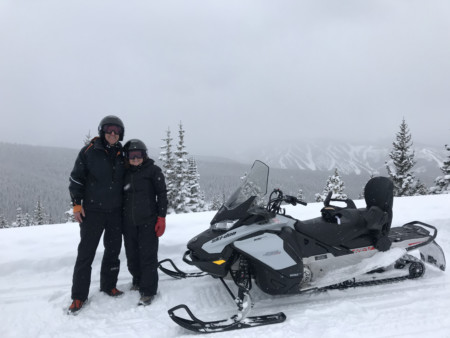
Even though I was aware that John McCain, Beau Biden, and Ted Kennedy were victims of brain cancer, a year ago I would not have been able to identify the terms— glioblastoma, glio, or GBM. These medical words had no meaning. It was not until Ira’s diagnosis last July that I became cognizant of the serious ramifications of glioblastoma. After Ira’s traumatic brain injury (TBI) in 2010, my focus was on issues that may arise after a TBI. Simultaneously, we increased both our active adventures and worldwide travels. Most of these earlier journeys were shared on this website. (PDF versions of my professional travel writing stories are on The Traveling Bornsteins website.) Brain cancer was not on our radar.
I will never forget the day we received the news at Foothills Hospital in Boulder. An MRI scan detected a five-centimeter mass on Ira’s right temporal lobe. The radiologist, the primary care doctor, and the hospital’s neurosurgeon were certain it was glioblastoma. None were offering much hope. Glioblastoma is referred to as an incurable, terminal cancer. The mortality rate is terrifying.

The joy from our youngest son’s recent pandemic wedding was set aside as we prepared ourselves for a craniotomy and subsequent treatments. The initial conversations were unsettling. After 45 years of marriage, I was not ready to say goodbye to my b’shert (Yiddish–one’s divinely predestined spouse or soul mate). From the onset, Ira was confident that he would defeat this aggressive cancer.
Within less than a day of getting the diagnosis, we had an appointment with Dr. Kevin Lillehei, the Chair of the Department of Neurosurgery at the University of Colorado Anschutz Medical Campus. His approach stood in sharp contrast to what we had experienced the day before. While surgery was imminent, Dr. Lillehei was not insisting that the craniotomy be performed immediately. We had about a week to adjust to our new reality.
Everyday had to be appreciated. We had to make the most of whatever time we had together because an invasive and aggressive cancer stood in the way of our future together. While I was hesitant at first, I agreed with Ira that looking forward and embracing life was better than simply accepting the inevitable.
As soon as the nursing staff said Ira could get out of bed, we were walking around the University of Colorado Hospital floor. My Apple Watch tabulated an abundance of miles before we went home a couple of days after the surgery. About two weeks after Ira was discharged from the hospital, we celebrated his birthday by taking an early morning stroll at nearby Standley Lake.
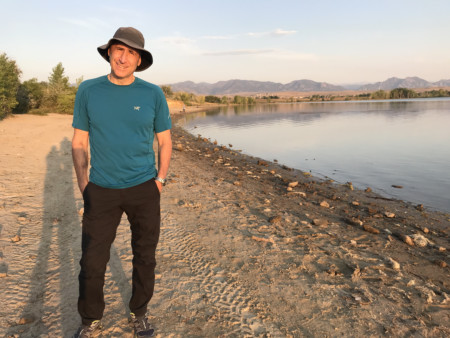
Ira tolerated the surgery, radiation/chemo and a second round of chemo exceptionally well. A post-op MRI scan confirmed Dr. Lillehei’s remarks at the end of the surgery. One hundred percent of the visible tumor was successfully removed. Gratitude became my new mantra. Every night, I am grateful for the things we experienced that day. A sizable number of glioblastoma patients are incapable of returning to their prior quality of life.
Instead of looking into speculative clinical trials and experimental treatments, I ordered books and listened to webinars. I was looking for the path that others had followed to lessen the symptoms associated with radiation and chemo, to beat the odds of a terminal cancer diagnosis, and to foster longevity. In a few places, I saw references to Dr Jeanne Wallace, an expert in nutritional oncology. To supplement my research, we consulted a few times with one of her colleagues, Michelle Gerencser, M.S.
I started to identify things that appeared to make a difference and then implement them into our daily life. If something wasn’t a good fit, we discontinued it. Like so many things in life, it was impossible to find a one-size-fits-all approach. During Ira’s doctor visits, we bombarded the specialists with questions and asked for their feedback. Ira’s doctors were receptive to an open dialogue and were exceptionally pleased with his resiliency and stamina.
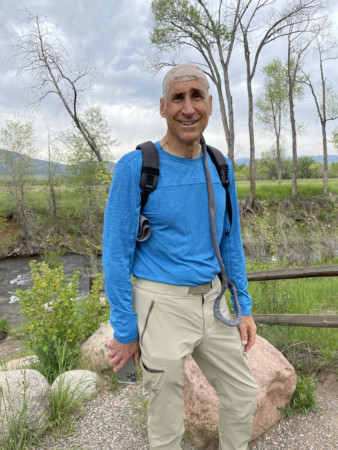
Prior to the six months of chemo, Ira agreed that the FDA approved Optune device should be included in our daily routine. Within no time, this apparatus became part of our existence. It goes almost everywhere we do except when we are horseback riding, skiing, or engaging in water sports. When significant skin irritations occur, it becomes necessary to take a break from usage. We also try to avoid excessively warm temperatures. The device starts beeping when it gets too hot.
By wearing the device at least 75% of the time, we are hoping that the remaining strains of tumor cells will not be able to form into another tumor. “The TTFields is a therapeutic method that exerts anti-tumor effect by inhibiting the mitosis of tumor cells.”
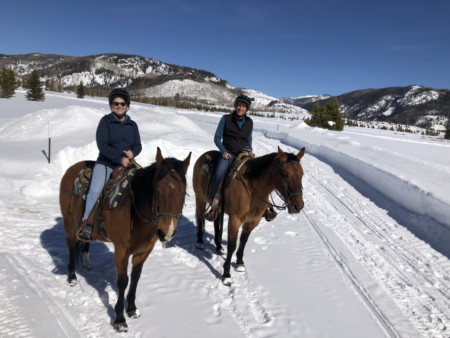
I received pushback from people who did not appreciate or care to understand our evolving perspective on how to cope with a glioblastoma diagnosis. Even though none of our friends or relatives knew anything about the books I was reading the webinars I was watching, or the experts we were consulting with, many people were critical of what we were doing. Ira and I were confident that better lifestyle choices would make Ira’s cancer journey easier. Yes, there are people who live long lives without eating a nutrient-dense diet or adapting a healthier lifestyle, but did they encounter a terminal disease along the way?
Following Dr. David Reardon’s advice, Ira limited the amount of time he spent consulting with legal clients and took it easy during the radiation and chemo treatments. A short time after completing the six-week protocol, Ira was ready to return to his pre-surgery quality of life.
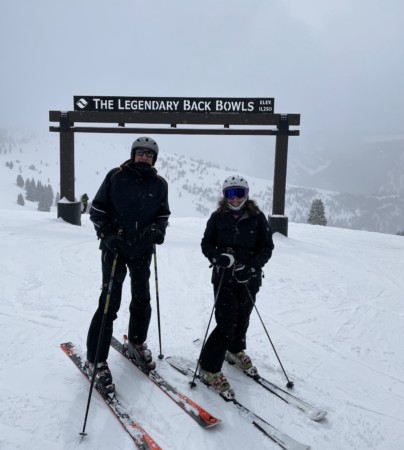
In the first half of 2021, Ira skied more than 20 times in the Rocky Mountains (including a media getaway to the Grand Hyatt Vail), went winter horseback riding and snowshoeing at Vista Verde Ranch near Steamboat, swam off the coast of Captiva Island, Florida, snorkeled near Ni’ihau in the Hawaiian Islands, and hiked extensively in Denver’s Front Range and in Summit County, Colorado.
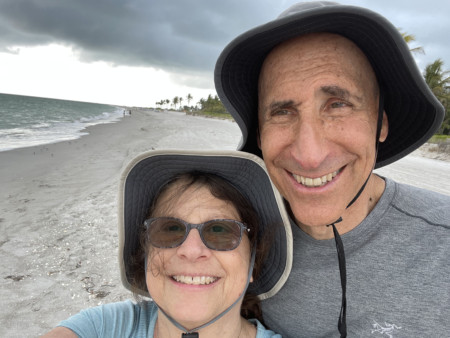
At times, Ira exhibits a higher energy level than me. To keep our positive vision intact, I am continually researching and planning new adventures to fill the remainder of the year as well as the first half of 2022. Ideally these trips will be a mixture of personal and privately planned media trips.
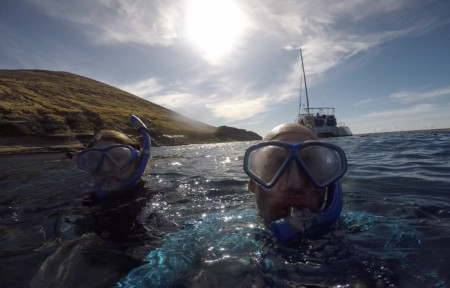
Going forward, we will remain upbeat and hope that the MRI scans every two months will remain unchanged. If the images come back different, we will consult with Ira’s UC Health oncology team, second opinion doctors, and Nutritional Solutions to determine our next steps. In the meantime, we are embracing life with the intent of defeating glioblastoma.
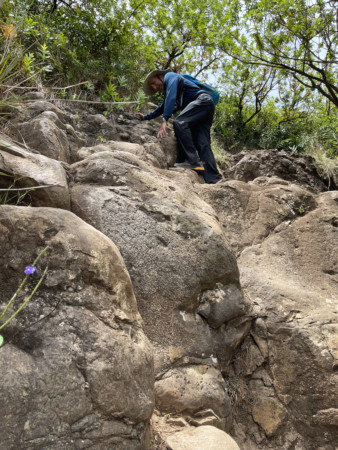
We sincerely hope that Ira’s perseverance and positivity will inspire others not to give up and that readers who were unfamiliar with glioblastoma prior to now will have a better understanding of glioblastoma. Far too many patients and care partners become fixated on the cancer and don’t take time to appreciate the precious moments of life. #EmbraceLifeDefeatGlio.
After U.S. Senator John McCain passed away from glioblastoma in 2018, a bipartisan group of U.S. Senators sponsored a bill to set aside a day in July to raise awareness for the research and treatment of glioblastoma, a deadly and rare disease with a median survival of 15 months. Earlier this year, the U.S. Senate unanimously passed the bill. This year, Glioblastoma Awareness Day will occur on Wednesday, July 21.
Every day, we appreciate Ira’s ability to remain active and his stamina to travel. We realize that many glioblastoma patients cannot maintain their previous quality of life. On Glioblastoma Awareness Day, we publicly thank Dr. Kevin Lillehei, Dr. Douglas Ney, and Dr. Chad Rusthoven at the Anschutz Medical Campus in Colorado and Dr. David Reardon at the Dana-Farber Cancer Institute in Massachusetts for their compassionate care and expertise in treating glioblastoma. #GBMDay
Disclosure: The Traveling Bornsteins were media guests a Vista Verde Ranch, Grand Hyatt Vail, and the South Seas Island Resort. They received a media rate for their Blue Dolphin Charters snorkeling tour.
Related Posts
History Comes Alive at Vista Verde Ranch
New Year’s Tradition Skiing at Keystone Resort
Pandemic Destination Wedding in Telluride
Coming Soon
Stories about hiking in Colorado
BIO
Sandra Bornstein is the author of May This Be the Best Year of Your Life. Sandra’s memoir highlights her living and teaching adventure in Bangalore, India. She was a licensed Colorado teacher who taught K-12 students in the United States and abroad. Sandra also taught college-level courses at Front Range Community College and the University of Colorado-Boulder.
In addition to reviewing books and interviewing authors, Sandra is an award-winning author and lifestyle and travel journalist. Many of Sandra’s travel stories appear on the For Readers Page. To follow Sandra’s travel adventures, visit TheTravelingBornsteins website.
Connect with Sandra